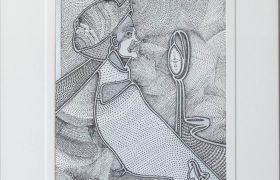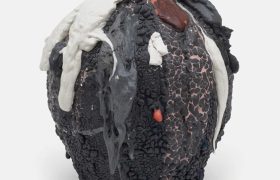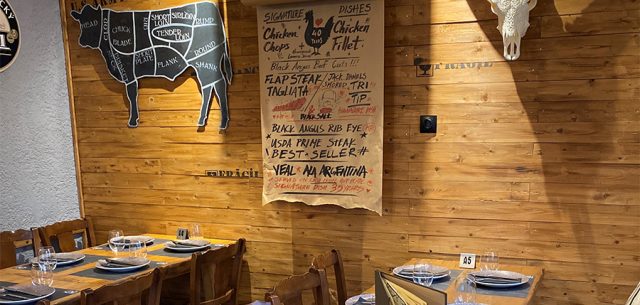A Breath of Fresh Air: 5 Great Green Spaces in Athens
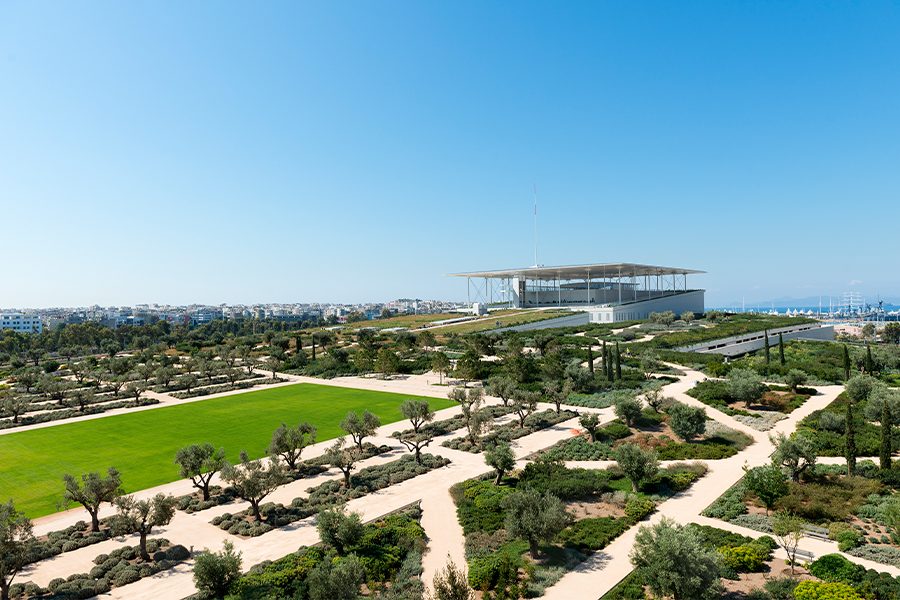
Insider takes a tour of some of the city’s finest ‘lungs’ that provide balm to the eye and soul, as well as a great year-round stage for jogging, biking and lazy weekend picnics.
The Stavros Niarchos Park
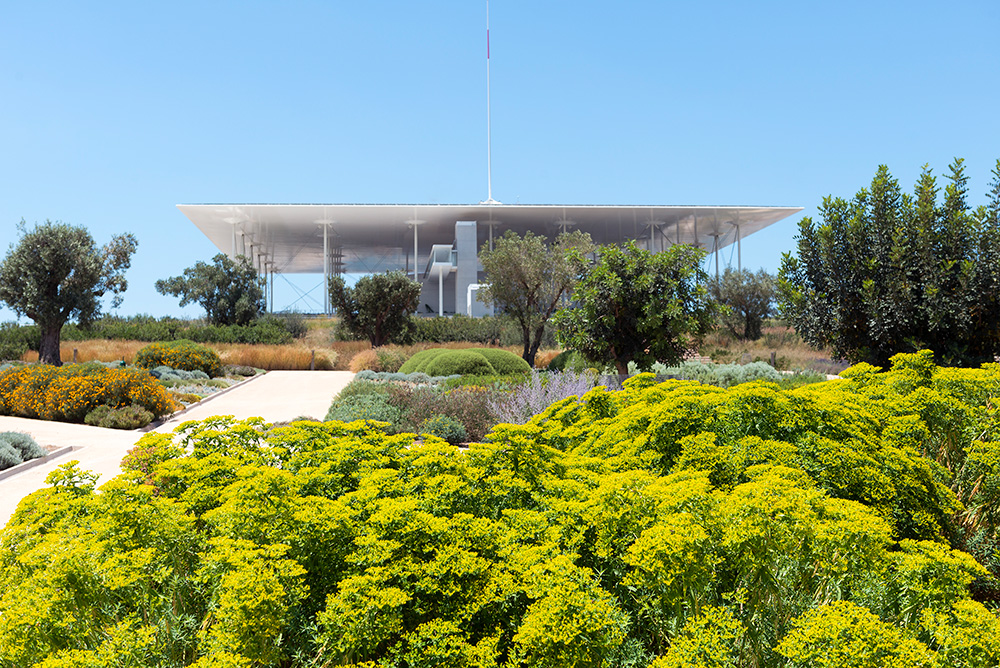
Stavros Niarchos Foundation Cultural Centre
Athens’ newest green space enchants all who visit it. Since it opened mid-2016, SNFCC has quickly become a must-see for all visitors to the capital. It’s also been enthusiastically embraced by the citizens of Athens, who have taken great pride in the cultural complex’s cutting edge design and 5 star green credentials.
This lush garden landscape was designed to be a respite from the capital’s concrete contours. It sports canals, interactive fountains, creative playgrounds (including a circular labyrinth), lines of olive and pine trees – and many people’s favourite feature – a Great Lawn, which actually sits atop the Library and Opera House, making the hill the green roof for the structure. One of the largest in Europe, the green roof significantly reduces air conditioning requirements. The summit offers spectacular 360-degree views of the sea to the west, the Acropolis to the east, and the cultural and educational park below, as well as of the Agora, the central plaza between the Library and the Opera House. Bursting with community spirit, the Great Lawn hosts a full monthly programme of mostly free outdoor events such as yoga workshops, musical concerts, theatre performances and classic cinema screenings.
Park facts
- Location: 364 Leoforos Syngrou.
- Size: At 17 hectares, the Stavros Niarchos Park covers 85% of the SNFCC site.
- Flora: Greece’s strong horticultural tradition is celebrated in the open, sunlit Mediterranean Garden. The plant palette alone makes the garden a destination: evergreen and other endemic plants such as boxwood, coronilla, cistus, and lentisc, salvia, oregano, thyme, lavender, rosemary, roses and euphorbias – all add to the sensual pleasure of a visit..
- Admission: Free.
- Open: Winter opening hours (1/11 – 31/03): Monday – Sunday 06:00 to 20:00. Running track: Monday – Sunday 06:00 to 00.00.
- Access: Shuttle from Syngrou-Fix Metro Station every 30 minutes.
Syngrou Estate
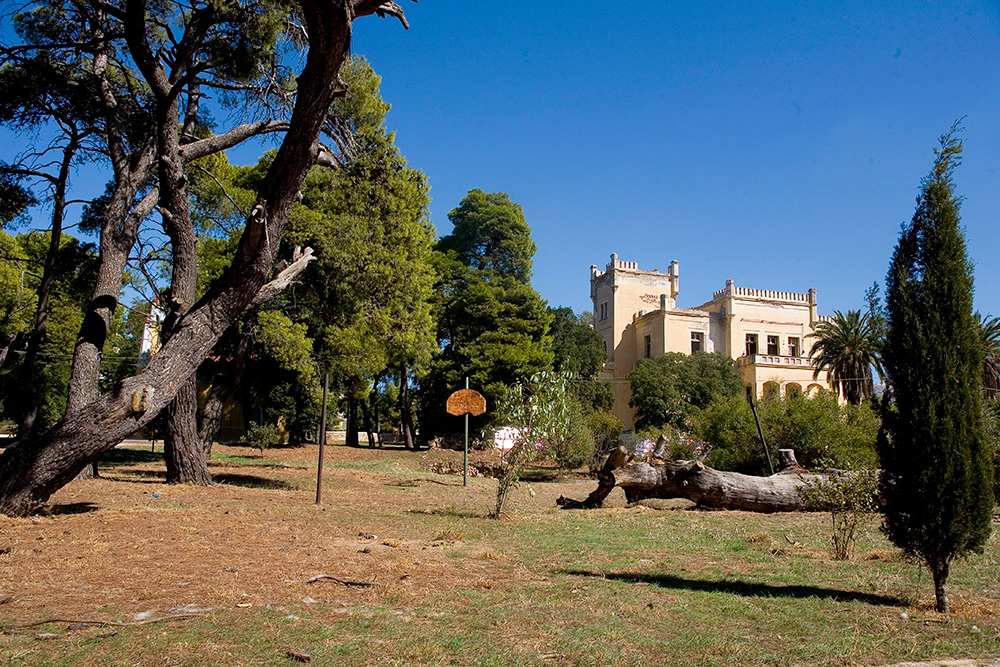
Syngrou Estate
Syngrou Estate is a paradise in Attica. It is a place of amazing beauty, where you can find rare plants – even wild orchids in December. And the people who visit respect this park. Syngrou Estate is clean, devoid of rubbish and free of drug addicts even though it is accessible day and night through small entrances in the perimeter fence. The only problem is that from time to time the municipality comes out with plans to build in the park. Luckily, so far these efforts have been stymied by the Friends of Syngrou Forest. Also, it is a shame that the fabulous buildings inside the estate are suffering somewhat from neglect. Thankfully, the neo-Gothic church of Agios Andreas has been restored, but the Ernst Ziller mansion has seen better days.
Park facts
- Size: 97 hectares
- Location: Off Kifissias Avenue, Maroussi
- Facilities: Numerous tracks for running, walking, rollerblading or cycling, including a 6km perimeter trail. Also a football pitch and playground facilities for children
- Planting: Mainly Aleppo pines and cypress trees; also meadows and olive/fruit orchards.
- Past: Syngrou Estate was owned by banker and philanthropist Andreas Syngros (1830-1899) and bequeathed to the Greek public by Iphigenia Syngrou in the 1920s for the training of gardeners and agronomists.
- Present: It is under the auspices of the Municipality of Maroussi, but cared for by volunteer groups the Friends of Syngrou Forest (www.dasosygrou.gr) and Kontra Ston Kairo, who carry out fire-prevention, planting and litter clean-ups
- Open: Main gate open from dawn until sundown daily.
Nea Smyrni
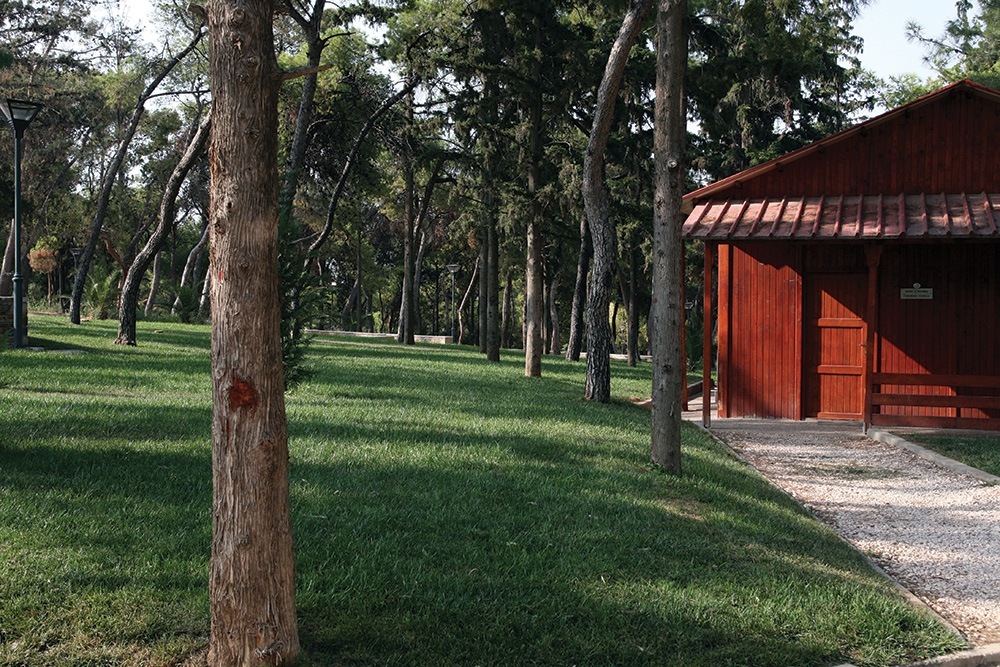
Nea Smyrni Park
Nea Smyrni park is a peaceful oasis in a densely populated suburb. Though accessible, it has retained a neighbourhood quality that makes it all the more charming. It has many facilities, including play equipment for children, a giant chessboard, jogging lane and summer theatre (where the Karaghiozis Shadow puppet festival is held in May and Ionian cultural events in September). The park is child-friendly with frequent free play activities for children such as tag and bowling organized by the local municipality, as well as a notice board displaying special community fitness events at the park.
Park facts
- Size: 5 hectares
- Location: Bordered by Eleftheriou Venizelou, Efessou, Kordeliou and Patriarhou Ioakim streets
- Facilities: Playground, jogging track, snack-shop, open-air 2,500-seat cinema, stage, WCs and giant chess set.
- The revamp: Remodelled between March 2006 and June 2007. Work included tree planting, lawn-laying, building stone walls, shrub-cutting and resurfacing.
- Water consumption: The park’s lawns are watered once daily with water from bore holes.
- Open: In summer, the gates are open 6am-11pm (the park is spotlit) and in winter 6am-9pm.
Tatoi Estate
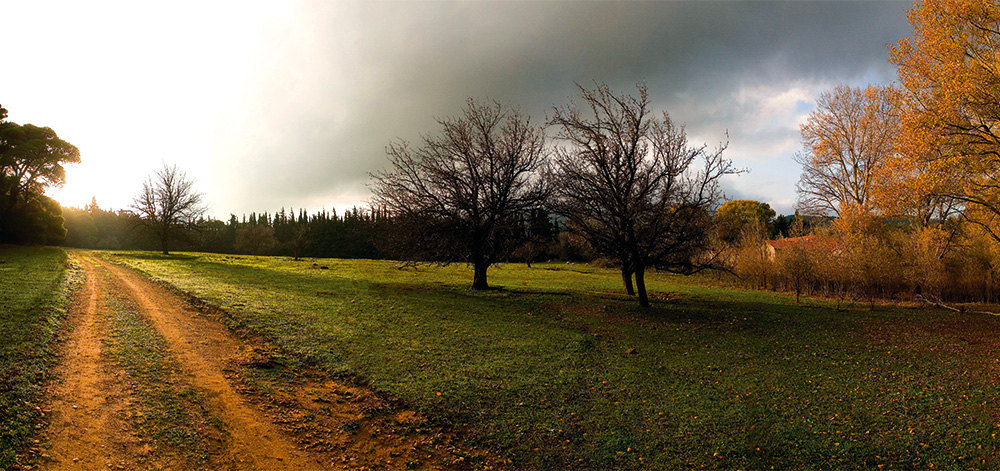
Tatoi Estate
Going to the Tatoi estate is like an excursion: it feels far away from Athens, yet it’s only 10 minutes from Kifissia. It’s a great open space to bike for about an hour and discover the estate, which is beautiful in a feral, natural way. The path winds right up to the impressive graves where one can read the history of the last two centuries in Greece engraved in stone. Tatoi Estate offers a fabulous escape into the wild. Do bring your bicycle or running gear to try out the trails (plus refreshments if you need them, as there are no shops in the vicinity).
Park facts
- Size: 3,000 hectares
- Location: Approximately 25km from central Athens, in the foothills of Mount Parnitha
- Flora: More than 1,000 plant species are recorded in the National Park of Parnitha, which includes the Tatoi estate. Many are endemic, and some critically endangered, such as white peonies, red lilies and red tulips
- Fauna: Parnitha is home to over 130 bird species (including hawks, woodpeckers, kestrels and short-toed eagles), 30 reptile species, and 45 mammal types including hares, foxes and the sole red deer population in southern Greece
- Past: Developed in the late 19th century as the Greek royal family’s country estate, it was abandoned when the royal family fled the junta. In 2002 the Greek state paid compensation to King Constantine to ensure full rights to the estate
- Present: The state has set aside the sum of 800,000 euros in the 2009 budget for renovation, with the aim of opening the palace as a museum in 2012
- Open: There is no gate or fence, so visitors can visit at any time
- Access: By car. Take the Varimbombi turn off the National Road north of Kifissia.
National Gardens
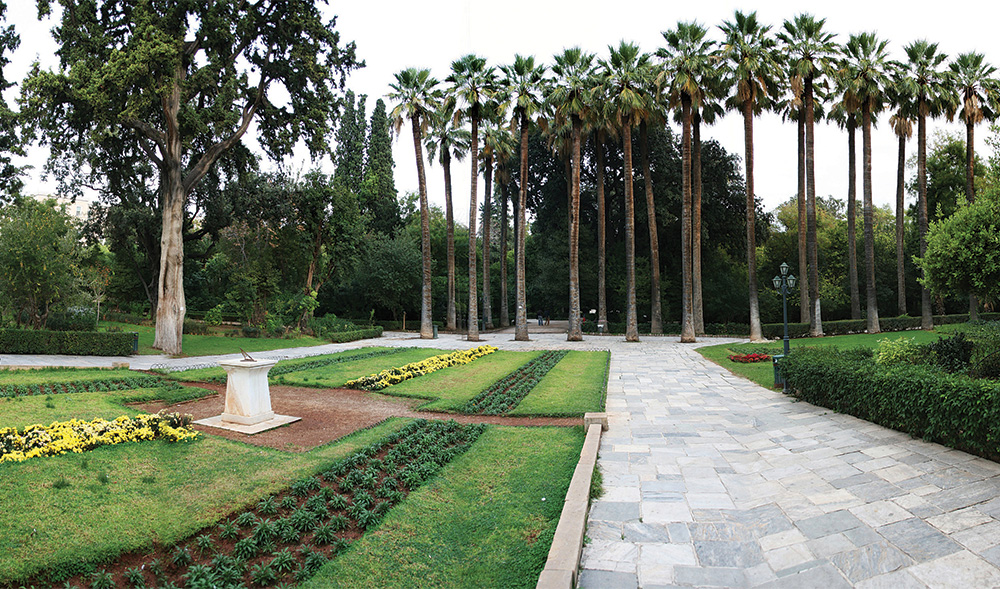
National Gardens
The incredible woodland canopy provided by the mature trees in the National Gardens still amazes the average passer-by. It is one of the most positive things about Greece’s first organised modern gardens, set out by Queen Amalia in the early-19th Century.
Queen Amalia’s original plan incorporated many exotics sourced and planted by her German gardener Friedrich Schmidt. The magnificent South American Phytolacca tree near the Botanical Museum dates right back to Amalia’s day. Modern plantings have often followed this example –the 40-year-old Ceiba indica, a spreading deciduous tree from India, is believed to exist nowhere else in this country.
“It is the quintessence of a park, the thing one feels sometimes in looking at a canvas or dreaming of a place one would like to be in and never finds.” Henry Miller, 1939
Park facts
- Size: 15.8 hectares
- Location: Behind the Parliament, flanked by Vas Amalias, Sofias, Olgas and Irodou Attikou
- Facilities: Open-air cafe, children’s library and playground, botanical museum, running tracks
- Flora: Original plantings included Gingkobiloba from China and Californian Sequoia, natives like Holm Oaks, carob, Judas and mastic trees. Between 2006 and 2008, 700 indigenous trees, 1,750 bushes (including 300 rosebushes) and 1,300 groundcover species were planted
- Fauna: Birdlife includes hoopoes, parrots, sparrows, blackbirds and crows. A small zoo features donkeys, chickens, geese, ducks, rabbits and wild goats. The gardens are home to tortoises, abandoned cats and terrapins, as well as packs of dogs neutered and released by the municipality. The estimated 10 percent of dumped felines that survive the dogs are fed and neutered by www.ninelivesgreece.com
- Past: Designed by Amalia, first queen of Greece, the Royal Gardens were constructed between 1838 and 1840. Renamed the National Gardens after the monarchy was abolished in 1974
- Open: Sunrise to sunset daily (except during demonstrations and public holidays)
- Access: By metro, bus or tram, the gardens are just a stone’s throw from Syntagma Square.

